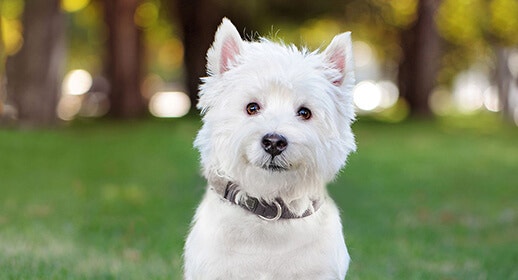- Homepage
- Discover a dog friendly world
- Dog-friendly HOMES
- 5 Dog training tips to help your pooch understand you


Does your pooch just stare at you looking confused whenever you use training commands? Here’s how to help them understand you better.
Dog owners often jest about what it would be like if our furry friends could talk back. While the thought of dogs speaking might be a little unsettling for some, it would be great if our pooches instantly understood our every command, wouldn’t it?
When another person doesn’t understand what we’re saying, we’ll usually try to explain ourselves in different words. We might even simply repeat ourselves louder. But that’s not really going to cut it with dogs, when it comes to teaching them basic obedience training commands. It might entertain them, but it definitely won’t make any more sense to them.
So how can you help your dog to work out what on earth you mean? Here are some of our top dog training tips for communicating clearly with your furry pal.
Show your dog what you mean
If you’re wondering how to teach a dog to sit, when they just can’t seem to grasp the word “sit”, the trick is to demonstrate. Help them out by putting them into a sitting position while you say the word, then praise and reward them. You can use this technique for other basic obedience training commands too, such as “fetch”. Simply take your dog over to their toy, while repeating the word. Over time they’ll build the connection between the actions and words in their mind! In fact, if you’re wondering how many words a dog can understand, research by the Opens a new windowUniversity of Sussex found that some dogs can learn over 75 words and phrases. Impressive, hey?
Be consistent
One of the top dog training tips you should keep in mind is to be consistent. While your dog might pick up a lot of words, they’re not fluent in English, so using different variations of a word or phrase can leave them feeling puzzled. For example, “drop” and “give” are both common dog training commands, but your dog’s probably only going to respond to the one you’ve spent time teaching them. Even telling a dog to “sit down” instead of to simply “sit” might confuse them. To keep things as straightforward as possible, always use the same phrasing and reward your pooch each time they do the right action in response to the right word.
Speak in a cheerful, confident tone
To your dog, your tone of voice makes a big difference. It’s likely to be one of the key signals they use to decide whether you’re talking to them or to somebody else, and familiar words can even lose their meaning when said in a different tone of voice .
Adopting a baby voice when talking to your pet might seem like a silly thing dog owners do, but reserving a certain tone for them can be helpful. If you’re training a dog to recall, for example, they’re much more likely to respond to your cheerful, confident tone than one that is stern or unfamiliar to what they’re used to.
Use body language
Our body language can also provide useful cues for our dogs, such as the use of dog training hand signals and even our body posture. Hand signals can be used to accompany many basic training commands like directing your dog to sit, or encouraging them to slow down when walking to heel. The way you hold yourself can also tell your dog a lot about how you’re feeling and even who’s boss. Standing up tall with confidence is a good way to communicate authority when using training commands. On the other hand, dogs can often detect our bodies tensing up when we feel anxious or scared, which can rub off on them and influence their behaviour. You can learn how to understand your pooch better, in our article about dog body language.
Try not to get frustrated
There will be times when your pooch drives you bonkers, but showing your frustration isn’t going to help anyone. Sometimes, when they forget something you thought they’d learnt, it could just be because they’re tired, over-excited, or hungry. For example, you may think they’ve nailed walking to heel and then one day it feels like all their training has gone out the window because there’s an exciting new dog to meet or squirrel to chase. Raising your voice will only stress them out or excite them and encourage more misbehaviour. So, try to stay calm, and you’ll get back on track with plenty of repetition, reward and reinforcement.
Overall, the secret to helping your furry friend understand you is to keep it simple – and keep it fun. Be consistent in the phrases and tone of voice you use when addressing your pooch, and reward them whenever they get a dog training command right. In time, you’ll both be happily on the same page - well, some of the time!




